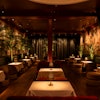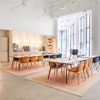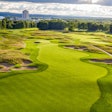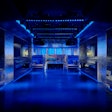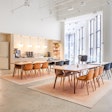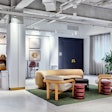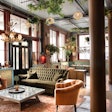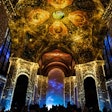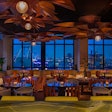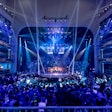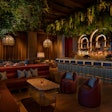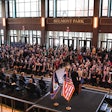With more than one million people expected to attend this year’s New York International Auto Show, running through April 8 at the Javits Center, automakers strive each year to stage booths that both inspire and inform media and consumers alike. Some 950,000 square feet of space is used by automakers showcasing more than 1,000 new vehicles—which run the gamut from more intimate spaces from the likes of Maserati and Alfa Romeo to full-on mega venues dominated by Toyota/Lexus, Honda/Acura, and Nissan/Infiniti, not to mention their American counterparts like Ford and Chevrolet.
The New York Auto Show was North America’s first—and continues to be the largest-attended—auto show dating back to 1900.
Spearheading a majority of the build-outs is veteran auto show production company George P. Johnson (along with sister agency Spinifex Group). Among their clients at the New York Auto Show are: Honda/Acura, Toyota/Lexus, Fiat Chrysler Group, Nissan/Infiniti, Mazda, and Volkswagen.
Given that according to the auto show, the average time spent at the event is 3.5 hours, it’s no surprise that automakers pull out all the stops—espresso bars (spotted at no less than six auto stands), interactive VR experiences, gift shops, charging ports galore, and more—in an effort to distinguish themselves in an ever-increasingly crowded arena. Despite, and perhaps because of, all the streamlining to their stands, a lack of sitting areas continues to be a big gripe at all auto shows, New York included.
In addition to the clean, linear lines that have long come to define auto show booths, color and texture—via carpeting, woodwork, LED lighting, and display cars in a rainbow of hues—have recently emerged as ways to further enhance a visitor’s ephemeral experience. Dominant European marquees BMW, Volvo, Porsche, and Mercedes have all, in recent years, brought in vehicles in a myriad of custom paint colors to illustrate their personalization programs (not to mention rack up social media buzz). One of the most popular activities came courtesy of Ford, which built a Lego bar at its stand where visitors could build their own male or female Ford Ecoboost mechanic miniature as a memento. (Even jaded auto journalists were spotted crowding the table.)
A standout vignette was at Acura, which debuted a new auto show stand concept in New York together with its RDX SUV. Production company George P. Johnson, along with Spinifex Group, created the Acura Performance Studio based on four principals: optimism, youthful energy, brilliant innovation, and timelessness. Set up like an art gallery, the vibrant new environment allowed Acura to beautifully showcase its vehicles while also providing for non-intrusive seating areas for group meetings or an individual to have a rest.

Designed to put the "show" back in auto shows, the Chevrolet New York Auto Show Experience was light on architecture but heavy on immersive content—by design. Conceived of and produced by Czarnowski, the 20,320-square-foot space contained 19 vehicles and featured large-scale transparent media screens: one Main Theater screen measuring 74- by 20-feet flanked by two smaller 18- by 20-foot LED screens. Choreographed lighting and custom audio are timed with the digital content, creating a space more akin to a living multimedia installation than a traditional auto show exhibit.
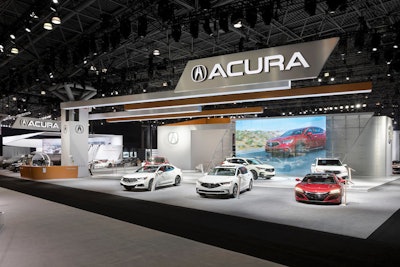
Boasting the only transparent clear Plexiglass LED screen at the show (one that is also devoid of any exposed cabling), the Acura space was designed and produced by George P. Johnson along with sister agency Spinifex Group to emphasize the brand’s recent return to its Precision Crafted Performance brand mantra. Audiovisual technical partner Seibo LLC introduced the glass HD/LED technology to the stand, boasting thousands of diodes reminiscent of Acura’s jewel-eye headlights, contributing to its minimalist, gallery-like ambiance punctuated with "in motion" horizontal slats overhead.
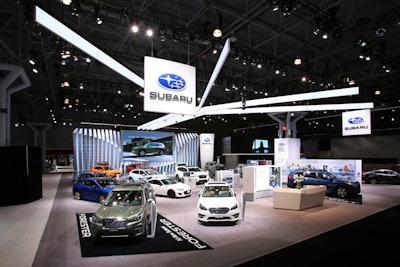
Subaru of America worked with EWI Worldwide to produce its exhibit. The 10,000-square-foot space housed 14 vehicles and required a four-day build. Dominating the space are 21-foot H Polygon structures made from custom stamped aluminum with multi-color LEDs secured within the structure with frost acrylic covers with sections that were daisy-chained together. Casters were placed on the polygons for quicker installation while steel columns support the polygons and black fabric hides the structure.
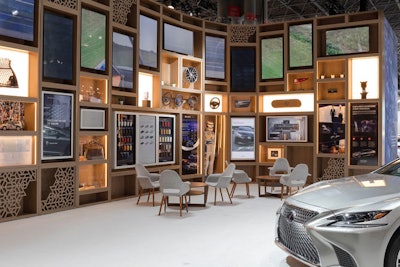
Lexus worked with design house Hakuhodo for the initial concept, with design and execution from George P. Johnson and digital engagements by sister agency Spinifex Group. The centerpiece of the space was the 51- by 22-foot, 7-inch Takumi Craftsmanship Interactive Touch Screen, which told key stories of Lexus’s passion for craftsmanship. Featured here via LED content was such content as a color and trim configurator; safety system plus interactive touch screen; Lexus racing interactive touch screen; and Mark Levinson sound experience.

Emphasizing a warm, human, and personally crafted experience, Lincoln, together with its partner agencies Imagination and EWI, devised a build-out designed to welcome guests into a place of sanctuary and discovery. Sensory cues were created to bring guests deeper into the 11,000-square-foot environment, while separate areas within the space, featuring see-through walls lined with Lincoln badge logos, offered a respite from the hustle and bustle of the show.
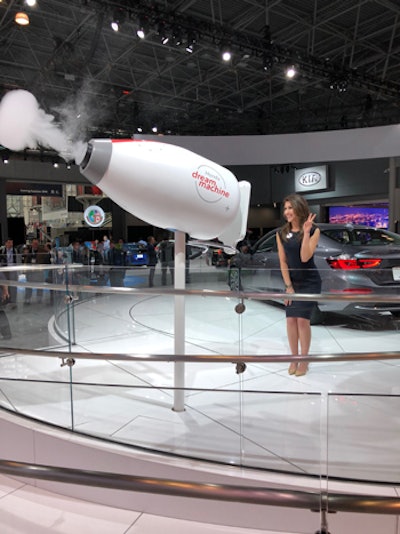
A fun way to deliver a selfie, Honda debuted the Dream Machine, a digitally enabled cannon that would prompt attendees with a few profiling questions to discover the right product for them and to take a selfie. Then, in a puff of smoke, the cannon would shoot those personalized “dreams” onto a 100-foot LED halo above: picture, animation, and all. The futuristic stand—a play off of the brand’s “Power of Dreams” theme—was, like sister Acura brand, designed and produced by George P. Johnson along with sister agency Spinifex Group. As part of the Honda Dream Core, guests were served real-time content about Honda’s featured vehicles with a mobile app or R.F.I.D. wristband.
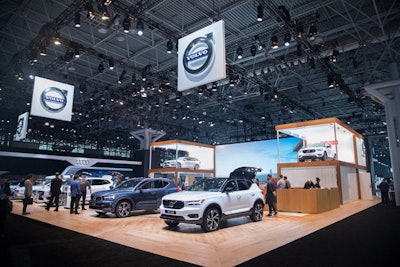
A total of nine vehicles were on display at the Volvo stand, which was designed and produced in-house and featured combined light-colored, textured wooden surfaces, clear and white/opaque glasses, and brushed metals for a clean, Scandinavian finish. Decorated with Swedish-designed furniture, the more than 6,500-square-foot space, spread across two levels, imparted a feeling of being in a modern Swedish sanctuary.
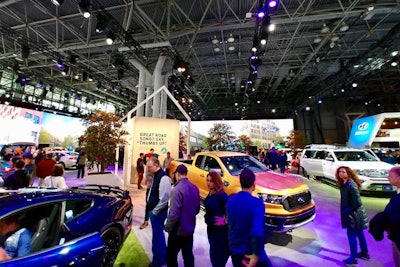
Ford, together with partner agencies Imagination and EWI, sought to present what future cities could look like as smart vehicles are introduced into a smart world. Spread across 20,000-square-feet of show floor space, Ford brought the outside inside with its series of streetscapes, live plantings, and rotating backdrops along a series of interactive LED walls—emphasized by a bevy of live street performers including the Luxury Brothers, the Mad Violinist, and hula hooper Xander Nixon. Interactive moments included emulating Steve McQueen’s pose on the classic “Bullitt” movie poster, a City of Tomorrow VR ride, and even a Lego bar where visitors could custom-build their own Ford race car driver as a takeaway.


